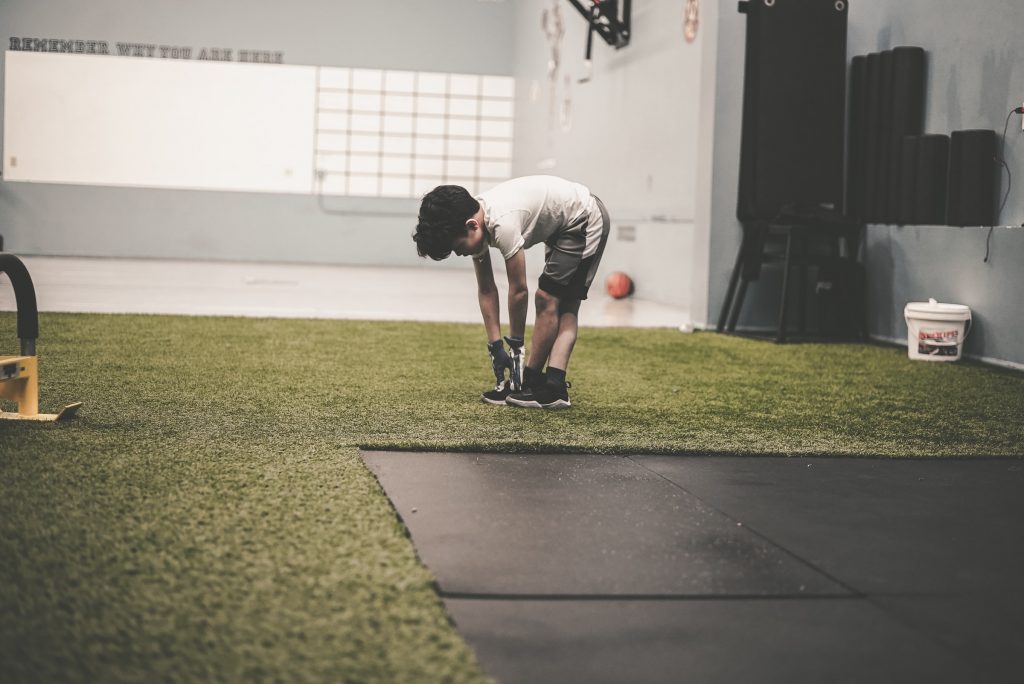There has been some controversy about whether children should take part in resistance training. Those who do not advocate for it at a young age often cite the issues related to proper bone development or injuries. Those who advocate for it cite the potential benefits associated with increased strength, performance, and health. So, who is right? 2
The Answer! 1
The scientific literature has continuously shown that resistance training in youth is POSITIVE. However, there are a few guidelines to follow in order to reduce the likelihood of injuries or negative outcomes. As such, the following are the main considerations to have when allowing a child to take part in resistance training:
- Supervision
- Proper Technique
- Appropriate Training Progression
- Warming Up
- Cooling Down
These guidelines are a great starting point for anyone supervising youth resistance training. However, much research has been done to evaluate this topic and best practices have been proposed. The resistance training should be:
- low to moderate in intensity
- 2 to 3 times per week with a day of rest in between.
- 1 to 4 sets
- 6 to 20 repetitions
- Each session can have 6 to 12 exercises.
What are the benefits of Resistance Training in Youth? 1
Let’s lay them out.
It may not come as a surprise to many that the benefits of resistance training in youth largely resemble the benefits of resistance training in adult populations. For starters, rather than increasing the risk of injury, resistance training in youth actually reduces the chance and severity of children’s injuries in sports. This is especially relevant for kids who play sports regularly or competitively.
Further, the following are examples of physiological improvements that youth may expect with resistance training:
- Bone mineral density
- Body composition
- Blood lipid profile
- Psychological skills
- Mental health
- Motor skills
- Coordination
Exercise Choice 1
No matter who you are, choosing your resistance training exercises can be difficult. The reality is that many exercises are good. You may think that some of are better than others due to personal experience. The choice of exercises should simply reflect the objectives of the person in order for it to be as effective as possible.
Evidently, every child or adolescent will have different goals. Sometimes a specific exercise for their goal might not be possible. However, when discussing exercise choice with youth, there are many options available. Typically, exercises can use machines, free weights, body weight, or several other options and equipment.
Start With Body Weight
Although all these options are likely to provide benefits, using body weight and free weight exercises may be a better starting point. As a general rule, using body weights and free weights allows the body to work in different planes. This allows for a better functionality in the movements and the improvements are more applicable to individuals’ everyday life (carrying groceries, walking up stairs, etc.).
Think About the Starting Point
Another important consideration is where the person is starting from. Even at a young age, individuals have very different physical activity related experiences. This means that many will have drastically different starting points. So, one’s abilities is an important factor to take into account when introducing youth to resistance training.
Plyometrics
Plyometric training is also a type of resistance training that can be done by youth. Some people may be shy to introduce youth to plyometrics because of its explosive nature. In consequence, many might feel that it could easily injure young athletes.
The truth is that children and adolescents often already take part in plyometrics in their daily lives. They hop, skip, run, sprint, and jump. Such abilities are at the core of plyometric training. Combining plyometric training with proper programming, young athletes can expect increases in their speed and power production.
So, if you are still unsure about plyometrics in youth, it may be safer to begin with less difficult and impactful movements and progress to more complex movements once a strong base has been achieved.
Conclusion
The consensus in the academic literature points to youth resistance training as being beneficial in almost the same ways as it is beneficial to other age groups.
Due to concerns related to growth and physiological adaptations, it is important that younger individuals do resistance training in a supervised environment. Therefore, it is always better to use an educated professional who can show appropriate form and technique to the individual.
Another benefit of soliciting an exercise professional (i.e. kinesiologist) is that they could help in creating a structured program with appropriate progressions, taking into account abilities and objectives. Not only will this reduce the risk of injury, it will increase the benefits and quality of resistance training in future years
If you have not yet had the chance to read it, here is an article describing the effect of sport specialization in youth.
References
- Behm, D. G., Faigenbaum, A. D., Falk, B., & Klentrou, P. (2008). Canadian Society for Exercise Physiology position paper: resistance training in children and adolescents. Applied physiology, nutrition, and metabolism, 33(3), 547-561.https://doi.org/10.1139/H08-020
- Falk, B. (2019). The Safety of Resistance Training in Children—What Do We Really Know!, Pediatric Exercise Science, 31(3), 265-266. Retrieved Sep 30, 2020 https://doi.org/10.1123/pes.2019-0143





